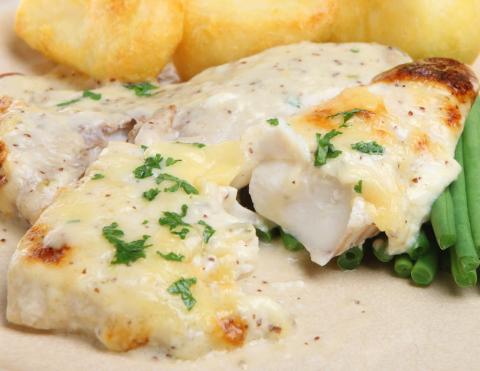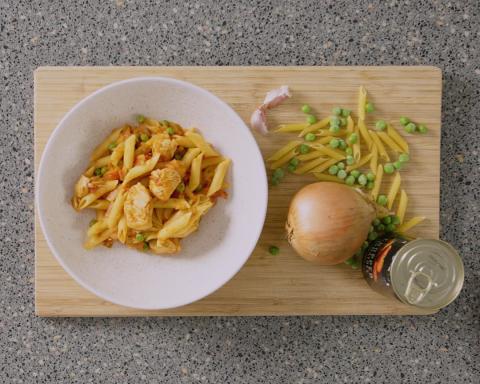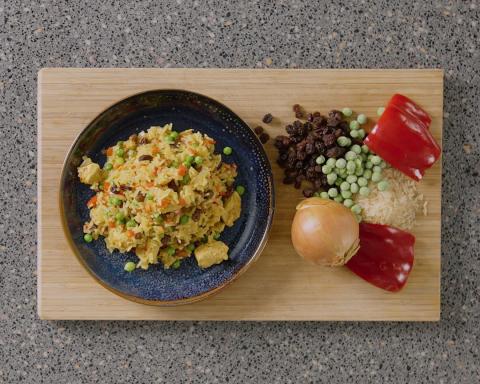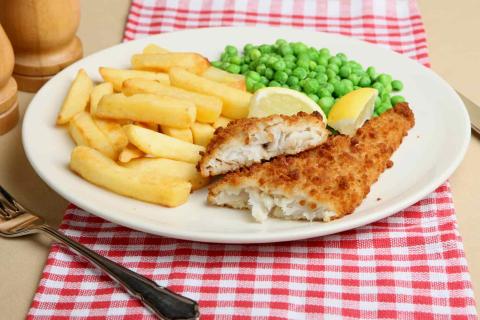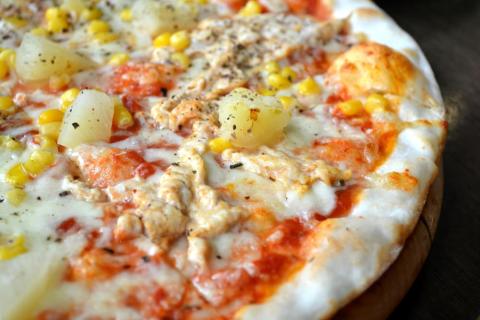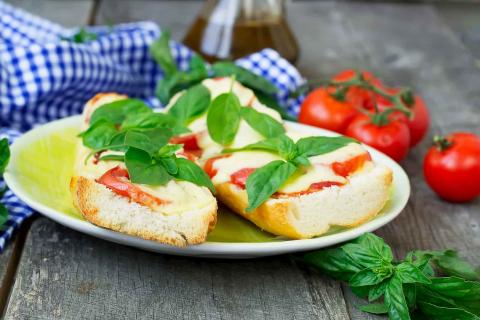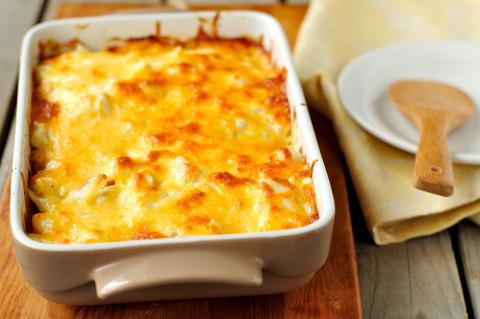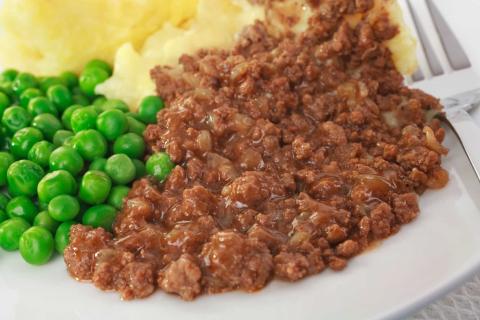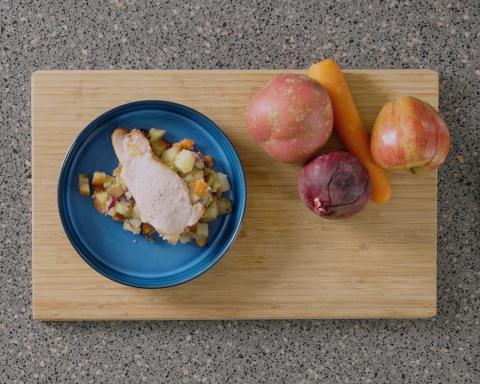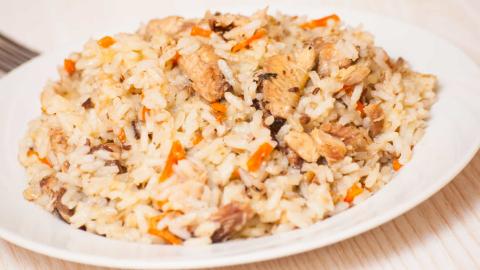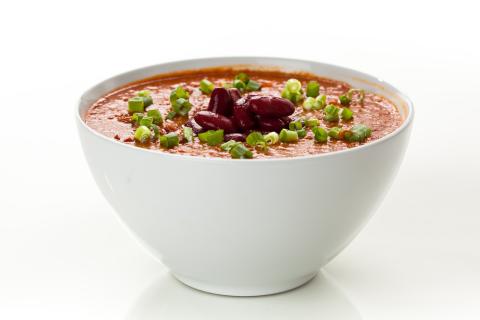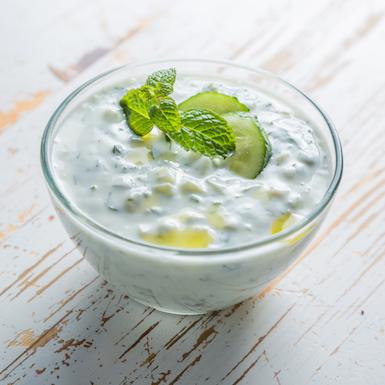- 4 (630g) Pork Chops
- 8 Medium Sized (680g) Potatoes
- 4 Medium Sized (320g) Carrots
- 1 Medium Sized (150g) Red onion
- 2 Medium Sized (200g) Eating Apples
- 2 Tablespoons (20g) Vegetable Oil
- 1 Teaspoon (1g) Dried Mixed Herbs
- 1 Pinch Ground Black Pepper
Ingredients
Allergy Disclaimer
Always check the label of each ingredient for allergy warnings.
Method
- Preheat the oven to 200°C / 180°C fan oven / 400°F / gas mark 6.
- Wash and peel the potatoes and carrots and cut into chunks. Peel and slice the onion. Wash the apples, then core and cut them into quarters.
- Boil the potatoes and carrots together for 5 minutes, then drain.
- Toss the potatoes, carrots, apple and onion together with the oil, herbs and black pepper on an ovenproof tray.
- Trim the fat off the pork chops and lay them on top of the vegetables. Roast in the oven for about 30 minutes, turning the chops halfway through cooking.
- Enjoy hot.
Time Saver Tips
Why not make this up to a day ahead (leave out the apples for now) so you can store it in the fridge ready for later? Then just pop the apples in before cooking.
Cost Saver Tips
This is a great way to use whatever vegetables are on offer – you could try courgettes, sweet potatoes, leeks, cherry tomatoes, parsnips or butternut squash for a change. It’s a good idea to try and go for what’s seasonal for the best bargains. You could try pork loin, other types of meat or even fish to add to the vegetables. Bear in mind that the cooking time for these alternatives may vary, so make sure the meat or fish is cooked through before plating up.
Tips for Kids
How about adding some sage or chilli for a different taste? Or you could see if your wee one likes this with wholegrain mustard and some green vegetables. Your little one will love helping you to mix all the veggies.
Nutritional Information
Based on a single serving of 315g (% of an adult's reference intake)
Energy
406 kcals ( 20 %)
1,711 kJ ( 20 %)
Fat
3.5 g ( 18 %)
Saturates
37.8 g ( %)
Sugar
13.2 g ( 15 %)
Salt
0.2 g ( 4 %)
Detailed nutritional information
| Per 100g | Per 315g serving | |
|---|---|---|
| Energy Kcals | 129 | 406 |
| Energy Kj | 543 | 1,711 |
| Protein | 11 g | 34.8 g |
| Total Fat | g | g |
| Saturated Fat | 1.1 g | 3.5 g |
| Carbohydrates | 12 g | 37.8 g |
| Total Sugars | 4.2 g | 13.2 g |
| NSP Fibre | 1.5 g | 4.7 g |
| Sodium | 26 mg | 81 mg |
| Salt | 0.1 g | 0.2 g |
Find out about nutritional labelling
Nutrition labels on the front of packaging
- Most of the big supermarkets and many food manufacturers display nutritional information on the front of pre-packed food.
- Front of pack nutrition labels provide information on the number of grams of fat, saturated fat, sugars and salt and the amount of energy (in kJ and kcal) in a serving or portion of a recipe.
- The labels also include information about reference intakes (expressed as a percentage) which are guidelines about the approximate amount of particular nutrients and energy required for a healthy diet.
- The colour coding tells you at a glance if the food has high (red), medium (amber) or low (green) amounts of fat, saturated fat, sugars and salt.
- The more greens on the label, the healthier the choice
- Amber means neither high nor low, so you can eat foods with all or mostly ambers on the label most of the time.
- Reds on the label means the food is high in that nutrient and these are the foods we should cut down on. Try to eat these foods less often and in small amounts.
Food shopping tips
If you’re trying to decide which product to choose, check to see if there's a nutrition label on the front of the pack. This will help you to quickly assess how your choices stack up. You will often find a mixture of red, amber and green colour coding for the nutrients. So when you're choosing between similar products, try to go for more greens and ambers and fewer reds if you want to make a healthier choice.
 Activities & Play
Activities & Play Behaviour
Behaviour Childcare
Childcare Development & Growing Up
Development & Growing Up Family, Friends & Relationships
Family, Friends & Relationships Feeding Your Baby
Feeding Your Baby Food & Eating
Food & Eating Health & Safety
Health & Safety Mental Health & Wellbeing
Mental Health & Wellbeing Money & Work
Money & Work Online Behaviour & Safety
Online Behaviour & Safety Pregnancy & First Days
Pregnancy & First Days School & Education
School & Education Sleep
Sleep














